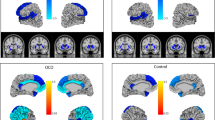Abstract
This study was designed to compare the social communication patterns of attention-deficit-disordered (ADD) and normal boys. This was accomplished by employing a “TV Talk Show” social role-playing procedure in which the task required different strategies for the roles of “host” and “guest. ” Groups of ADD and normal elementary-age boys were formed, and each boy was paired with a normal classmate. Measures of communication competence were coded from videotapes made of subject and partner social interactions while performing both roles. Results indicated that the ADD boys, in contrast to the control group, failed to modulate their social communication behaviors as task demands shifted. Additionally, the behavior of the ADD boys resulted in their normal partners' altering their response patterns in order to maintain the equilibrium in the dyadic interaction. These results suggest that the social behavior of ADD children is relatively independent of environmental requirements and may contribute to the inappropriate responding of others.
Similar content being viewed by others
References
Atkins, M. S., & Milich, R. (in press). IOWA Conners teacher rating scale. In M. Hersen & A. S. Bellack (Eds.),Dictionary of behavioral assessment techniques. New York: Pergamon.
Atkins, M. S., Pelham, W. E., & Licht, M. H. (1987).The differential validity of teacher ratings of hyperactivity and aggression: A correlational analysis with multiple classroom measures. Manuscript submitted for publication.
Barkley, R. A., & Cunningham, C. E. (1979). The effects of methylphenidate on the motherchild interactions of hyperactive children.Archives of General Psychiatry, 36, 201–208.
Bell, R. Q., & Harper, L. V. (1977).Child effects on adults. Hillsdale, New Jersey: Erlbaum.
Bryan, T. H., Donahue, M., Pearl, R., & Sturm, C. (1981). Learning disabled children's conversational skills-The “T.V. Talk Show.”Learning Disability Quarterly, 4, 250–259.
Campbell, S. B. (1973). Mother-child interaction in reflective, impulsive, and hyperactive children.Developmental Psychology, 8, 341–349.
Campbell, S. B. (1975). Mother-child interaction: A comparison of hyperactive, learning disabled, and normal boys.American Journal of Orthopsychiatry, 45, 51–57.
Conners, C. K. (1969). A teacher rating scale for use in drug studies with children.American Journal of Psychiatry, 126, 885–888.
Cunningham, C. E., & Barkley, R. A. (1979). The interactions of normal and hyperactive children with their mothers in free play and structured tasks.Child Development, 50, 217–224.
Cunningham, C. E., Siegel, L. S., & Offord, D. R. (1985). A developmental dose-response analysis of the effect of methylphenidate on the peer interactions of attention deficit disorder boys.Journal of Child Psychology and Psychiatry, 26, 955–971.
Hartmann, D. P. (1977). Considerations in the choice of interobserver reliability estimates.Journal of Applied Behavior Analysis, 10, 103–116.
Hartup, W. W. (1983). Peer relations. In E. M. Hetherington (Ed.),Handbook of child psychology: Vol. IV. Socialization, personality, and social development (4th ed., pp. 103–196). New York: Wiley.
Jacob, R. G., O'Leary, K. D., & Rosenblad, C. (1978). Formal and informal classroom settings: Effects on hyperactivity.Journal of Abnormal Child Psychology, 6, 47–59.
King, C. A., & Young, R. D. (1981). Peer popularity and peer communication patterns: Hyperactive versus active but normal boys.Journal of Abnormal Child Psychology, 9, 465–482.
Landau, S., & Milich, R. (1985). Social status of aggressive and aggressive/withdrawn boys: A replication across age and method.Journal of Consulting and Clinical Psychology, 53, 141.
Loney, J., & Milich, R. (1982). Hyperactivity, inattention, and aggression in clinical practice. In M. Wolraich & D. K. Routh (Eds.),Advances in developmental and behavioral pediatrics (Vol. 3, pp. 113–147). Greenwich, Connecticut: JAI Press.
Milich, R., & Fitzgerald, G. (1985). A validation of Inattention Overactivity and Aggression ratings with classroom observations.Journal of Consulting and Clinical Psychology, 53, 139–140.
Milich, R., & Landau, S. (1982). Socialization and peer relations in hyperactive children. In K. D. Gadow & I. Bialer (Eds.),Advances in learning and behavioral disabilities (Vol. 1, pp. 283–339). Greenwich, Connecticut: JAI Press.
Milich, R., & Landau, S. (1984). A comparison of the social status and social behavior of aggressive and aggressive/withdrawn boys.Journal of Abnormal Child Psychology, 12, 277–288.
Milich, R., & Landau, S. (1988). Teacher ratings of Inattention Overactivity and Aggression: Cross-validation with classroom observations.Journal of Clinical Child Psychology, 17, 92–98.
Newcomb, A. F., & Meister, J. C. (1985). The initial social encounters of high and low social effectiveness school-aged children.Journal of Abnormal Child Psychology, 12, 277–288.
Pelham, W. E., & Milich, R. (1984). Peer relations in children with hyperactivity/attention deficit disorder.Journal of Learning Disabilities, 17, 560–567.
Ross, D. M., & Ross, S. A. (1982).Hyperactivity: Current issues, research, and theory (2nd ed.). New York: Wiley.
Siegel, L. S., Cunningham, C. E., & van der Spuy, H. I. J. (1985). Interactions of language-delayed and normal preschool boys with their peers.Journal of Child Psychology and Psychiatry, 26, 77–83.
Whalen, C. K., Henker, B., Collins, B. E., McAuliffe, S., & Vaux, A. (1979). Peer interaction in a structured communication task: Comparisons of normal and hyperactive boys and of methylphenidate (Ritalin) and placebo effects.Child Development, 50, 388–401.
Whalen, C. K. Henker, B., & Dotemoto, S. (1981). Teacher response to the methylphenidate (Ritalin) versus placebo status of hyperactive boys in the classroom.Child Development, 52, 1005–1014.
Author information
Authors and Affiliations
Rights and permissions
About this article
Cite this article
Landau, S., Milich, R. Social communication patterns of attention-deficit-disordered boys. J Abnorm Child Psychol 16, 69–81 (1988). https://doi.org/10.1007/BF00910501
Revised:
Issue Date:
DOI: https://doi.org/10.1007/BF00910501




